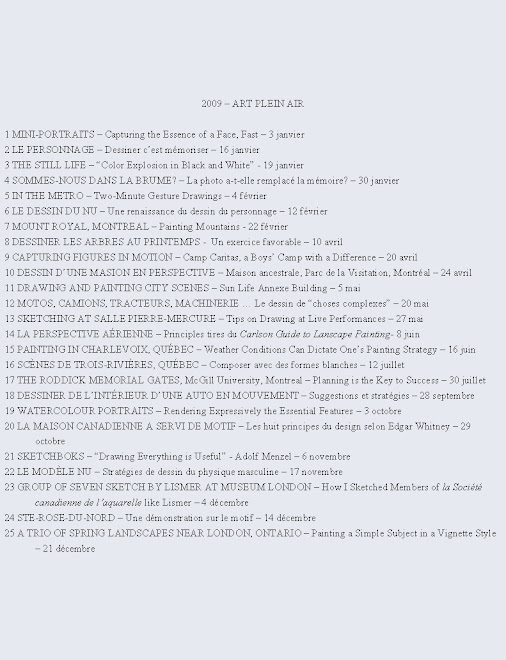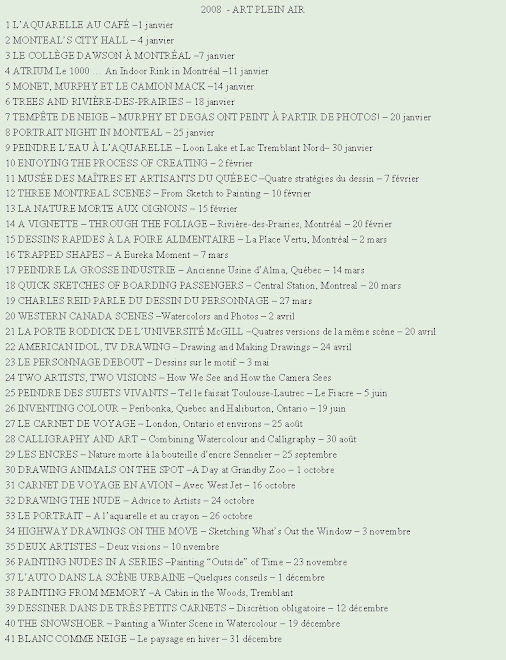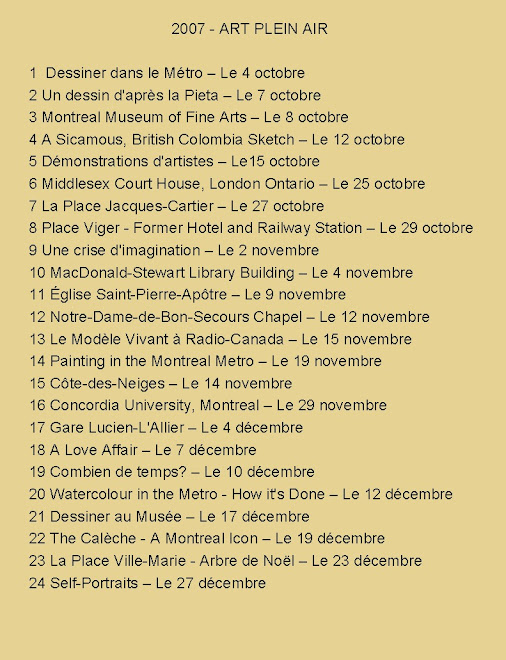Museum London
Museum London (Ontario) has received an important Group of Seven artwork for its permanent collection. The London Free Press mentions that the untitled sketch on paper in charcoal and pencil was done by Lismer in 1930. Reporter Rumleski says: “Think about artists going out into the natural world and doing sketches. Typically, we don’t put as much recognition on the sketch as we do on the larger piece.” The present show hopes to turn this around by showing that this sketch and others are actually major pieces.
Drawing at a meeting of the SCA
Like Lismer in 1930, artists Helmut Ronacher, Luigi Tiengo and I, members of la Société canadienne de l’aquarelle, likewise drew sketches of our friends at our annual meeting on November 14th. I have posted some of mine here. Maybe many years from now when we are no longer here our “meeting sketches” will also be considered “major pieces” as is Lismer’s sketch today!
Draw while you listen
Most meetings are listening affairs so I have realized that I can practice portrait drawing while I listen. At meetings most people face forward, are attentive and stay relatively still. This gives me the opportunity to draw various facial views depending where I am sitting.
Seating around a table
If members are seated around a table, then it is more difficult to draw participants discretely. In such cases I will revert to drawing small portraits in the margins of distributed papers. Also, I will try to sit as far away from the board members as possible. This gives me a better view of most members.
Seating auditorium style
The type of arrangement where board members are seated at a table facing the assembly is ideal. Arriving early I will try to sit at the back of the room. This permits me to look diagonally across the assembly and the chance to draw profile or near profiles.
Choice of sketch book
I prefer to draw these “meeting portraits” in a bound sketch book rather than in a spiral book. Drawing in a spiral book tends to draw attention because the format signals sketching. Size matters here. A smaller book is preferable because it is less visible and it can be manipulated easier. I recommend a format not larger than 5 in. by 7 in.
Choice of drawing tools
Nero or Derwent pencils are my preferred pencils. I also sketch with graphite pencils, a thin felt marker, soluble ink pens or other tools but the advantage of these pencils is that they render values from very light to black. These composite pencils are available as very soft, soft, medium and hard. They are also available in sepia and sanguine tones. However, you will have to experiment and see what suits you.
Pencil sharpening
I have drifted away from sharpening my pencils with a mechanical sharpener for two reasons. Firstly, sharpeners tend to “eat away the lead” especially the softer leads. Sharpening pencils with an x-acto type blade produces a sharper and more elongated point. I can thereby shade more easily with the side of the pencil. To further sharpen the pencil end I rub the tip on sandpaper.
The next time you are at a meeting why not sketch. It might become wonderfully addictive as it has for me not to mention that your drawings might also have “value” one day!
Raynald Murphy sca














